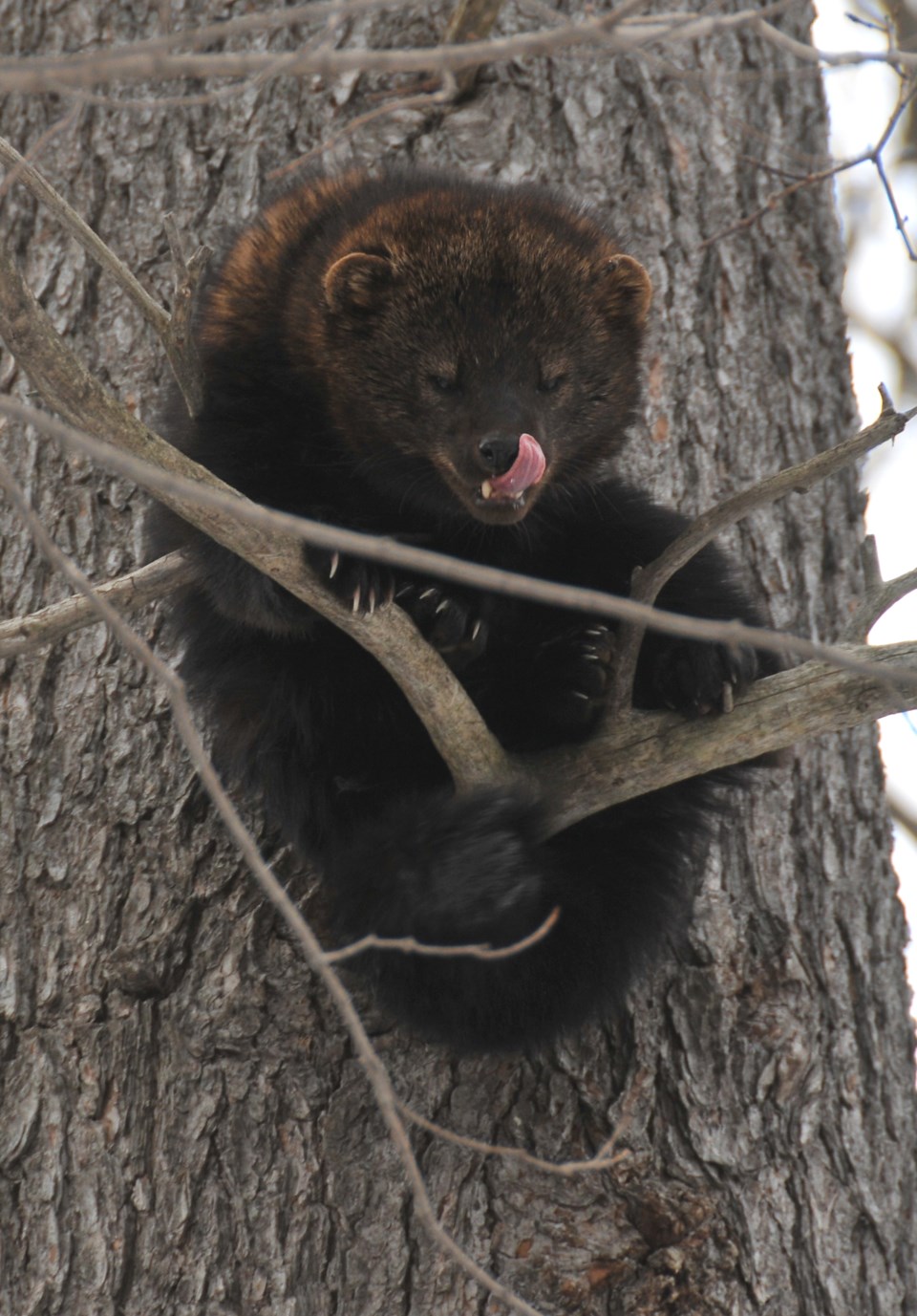The animal that crossed the road in front of me was big. Well, not bear-sized big, but big in comparison to most of the local mammals.
The dark body was about the same dimensions as a fox, but with much shorter legs. What really gave away its identity was the undulating flow of its body as it ran across the view as seen from my windshield. Fisher!
Fishers are in the weasel family (related to marten, mink, otter, skunk and others) and have been known to be living in this area for many centuries. They prefer heavily wooded areas that are comprised of old hollow trees and younger concealing trees.
The hollow trees make great den sites and also winter shelters. With so many American beech trees now dead from the beech bark disease, these hollow shelters have become fairly commonplace in the local woodlots.
The name ‘fisher’ is a twisted variation of its European counterpart, the pole cat. Over there it was called a “fitchet” and when the folks came over here about 400 years ago, they saw a look-alike and called it by the same name, which other new arrivals thought was a mumbled pronunciation and corrected it to be “fisher.”
So, does a fisher eat fish? Not usually. It prefers to eat from a terrestrial palette: rabbits, hares, chipmunks, red squirrels, mice, young raccoons, cats, small yappy dogs, wild fruits, crickets… well, you name it, a fisher has probably eaten it.
One of the more challenging prey species that fisher go after are porcupines. Only cougars and fishers will deliberately take on a porky, being able to avoid that prickly pincushion and get to the tender underside.
Cougars do it with a flip of the animal over onto its back, while fisher will climb a tree with a porcupine, continuously nipping at the face. Eventually the porcupine will succumb to the attack and fall to the ground, where the fisher will eat everything but the skin and intestines.
This porcupine-eating trait resulted in the introduction of fisher to areas where the maple-tree loving porcupines were threatening the maple syrup industry. This action was taken in the 1920s and 1950s, but there are conflicting reports as to whether or not the introduced fisher actually had any affect on the porcupine population.
A number of years ago I had the unique opportunity to go behind the scenes of a large fur market auction, and was afforded close-up views of the thousands of pelts being brought in for sale. These raw pelts had to be sorted and graded for fur quality, which meant that a lot of people were employed as graders.
The graders handling the fisher pelts had to wear chain mesh gloves, as the skins often had porcupine quills imbedded within the luxurious fur. No signs of infection, but the quills were still as sharp as the fateful day the porky thrust them there.
As the fisher is a top predator, they have to maintain a very large territory (about 25 square kilometres) just to find enough food to sustain them. It may take over a week of travel to complete a circuit around the home turf. Along the way they scent mark the boundaries, using either their anal scent glands (like a skunk) or the small glands found on their hind paws.
As their once uninterrupted forested land has become segmented into cottage roads and rural estate subdivisions, the wily fisher has found a new source of protein: kitty-cats and wee doggies.
I suppose that the fisher, whose territory has been invaded by humans, believes that as a way to compensate for this invasion the humans offer up small sacrificial meals? I really don’t know just what a fisher thinks about, but I can anthropomorphize the heck out of it.
In all my days of wandering about the great outdoors, I have seen a total of three fishers. They are very secretive, even shy, and to actually lay your eyes on one is a rare privilege.
The accompanying photograph was taken of a sleeping fisher who I had just awoke when I stepped on a dry branch. The crack of the wood startled this big male from his slumber, and he was less than pleased to see me so close!
As more, and more, and more human homes are being thrust upon our once rural landscape, the fisher and others of its ilk are being pushed aside. Some, like the coyote and fox, are adapting by hunting backyards, but the normally shy fisher is having a hard time to find enough wilderness space to maintain its presence.
Perhaps the abduction of the occasional Mr. Fluffy or Charlie-dog is the fisher’s way of telling us to back off? Unfortunately, that message has been unheard.
